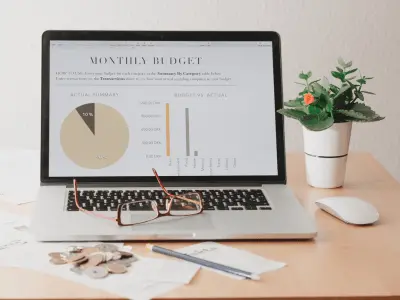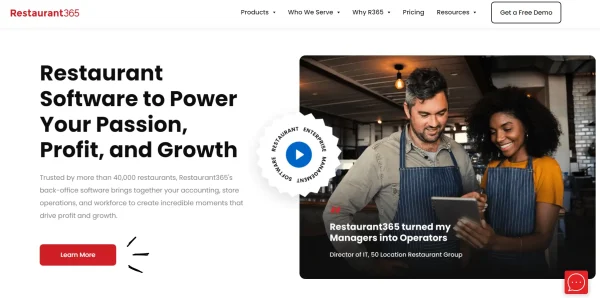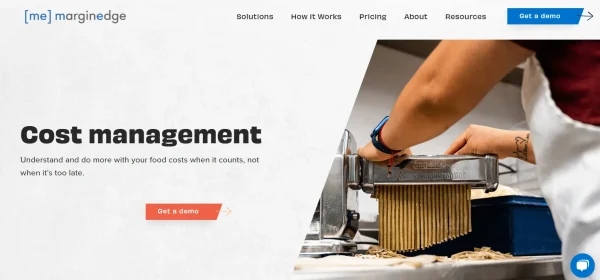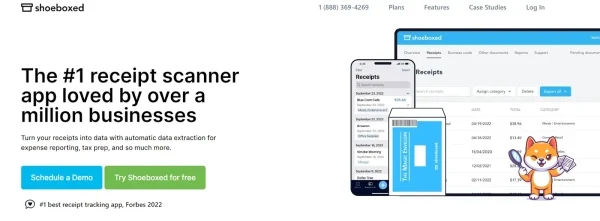A restaurant business’s success depends on effective budgeting and proper planning.
A properly structured financial plan can be the key to reaping substantial profits while controlling restaurant expenses.
Learning how to successfully manage these costs by crafting your own robust budget will help you optimize growth for this year.
This restaurant budget breakdown will cover budgeting techniques that’ll take any successful eatery into 2024!
Short summary
Understanding restaurant budgeting is essential for managing expenses and increasing revenue.
A restaurant budget consists of fixed, variable, and semi-variable costs which must be accurately identified to optimize profits.
Restaurant owners can ensure financial success by controlling food & labor costs, boosting sales & revenue, reducing operating expenses, and adapting their budgets to changing circumstances.
Understanding restaurant budgeting

A restaurant budget is essential to proper business management and ensuring financial health.
For many owners, creating a budget is an imperative part of the management process to guarantee the success of their restaurant business.
Having a strategy that accounts for fixed, variable, and semi-variable costs enables restaurateurs to have better control over expenditures while also optimizing profits.
A well-thought-out plan allows them to maintain the financial health of their eatery while increasing revenue within the restaurant industry.
Properly allocating resources throughout different areas, such as labor cost or marketing campaigns, can help prevent failure rates among restaurant owners and provide more assurance when it comes to running a restaurant business.
What’s the purpose of a restaurant budget?
A restaurant budget is an invaluable tool for restaurants in managing their costs and increasing profits, as it allows them to keep track of expenditures and ensure income surpasses outgoings.
By monitoring this financial record closely, including key indicators, such as monthly expenses or equipment repair costs, businesses can gain a comprehensive understanding of the health of their finances and accurately forecast their restaurant’s sales.
Restaurant sales forecasting predicts whether revenue will cover base costs, ensuring continued stability over time.
In short, having a restaurant budgeting plan in place is essential for staying on top of expenses to maximize profitability and safeguard longevity for your business.
Turn receipts into data for tax time ✨
Try Shoeboxed’s systematic award-winning approach to receipt tracking for tax season. Try free for 30 days!
Get Started TodayWhat are the key components of a restaurant budget?
When creating a restaurant budget, it’s important for owners to consider the fixed costs that remain consistent despite changes in sales, such as rent, utilities, and insurance.
There are also variable expenses, including repairs or taxes, that fluctuate depending on turnover.
To get an accurate assessment of your financial status, you’ll need to categorize all of your expenses into variable and fixed costs.
This will help you prepare for unexpected costs and stay on top of your finances.
Knowing what makes a realistic budget allows for more informed decisions on operating costs and ensures profitability.
How do you create a restaurant budget? Step-by-step guide

A step-by-step guide to creating a restaurant budget, including identifying and categorizing expenses, projecting sales and revenue, and monitoring and adjusting expenses.
Creating a realistic restaurant budget is essential to ensure your business’s financial success.
This process involves categorizing expenses, projecting sales and revenue, and monitoring and adjusting accordingly.
Your goal should be for sales to exceed spending, which can only happen if a comprehensive restaurant budget plan is put into place.
By following the steps below, you’ll better understand your overall financial health and prepare your company to thrive in an ever-changing market.
Step 1. Identifying and categorizing expenses
The first step is to identify and categorize expenses when you create a restaurant budget.
It’s a good idea to keep records of daily, weekly, and monthly income and expenditure on spreadsheets to organize and track all of the costs associated with running your restaurant.
Beverage and food costs, labor cost, restaurant sales, operating costs, loan payments, and restaurant equipment should be accounted for.
PRO TIP: Ideally, food costs should be between 28% – 35% of total revenue for the business to remain financially secure.
By tracking and categorizing your income and expenses, you can trace any potential ‘cost leaks’ and adjust the budget accordingly.
Watch this video to see how to calculate food costs:
How to calculate food costs with the food costs formula, The Restaurant BossStep 2. Projecting sales and revenue
Revenue and sales forecasting is crucial to recognize changing trends from one period to another.
By looking at past records in your Point-of-Sale system, you can calculate the average sales of previous months and effectively predict future sales.
This will help you stay on top of your budgeting needs and get an idea of which decisions affect your business for better or for worse.
Knowing your business’s sales patterns enables you to plan for the future and create your budget around the restaurant sales forecast and increase your annual revenue.
Step 3. Monitoring and adjusting the budget
Monitoring and adjusting your budget as you go ensures that you can effectively cover the needs of your restaurant.
Taking some time each month to review your budget will allow you to update it as necessary and allocate money where it’s needed the most.
Software like BarSight, Restaurant365, and MarginEdge are great ways to keep track of expenses and sales digitally so you don’t run the risk of errors while recording manually.
By evaluating and tweaking your budget as you progress throughout the year, you can achieve your goals easier and avoid spending money in areas where it’s not really needed.
Watch this video to learn more about creating a restaurant budget:
Create a restaurant budget with The Restaurant Boss
What are some tools and techniques for effective restaurant budgeting?

A POS system and accounting software are essential tools for effective restaurant budgeting.
There are a variety of tools and methods that can help you stay on budget.
Using programs like Restaurant365, QuickBooks Online, Xero, or ZipBooks gives business owners access to POS systems, inventory management software, and data analysis reports that can help them better use and save their money.
By using these resources, you can track sales against costs, ensuring an achievable and sustainable financial plan.
1. Using POS systems and accounting software
A POS system can be integrated with accounting tools and software to track your business’s finances and gain insights into how to budget your money effectively.
Real-time data lets you track sales performance over different periods of time and keep tabs on your inventory.
Any transactions made on the POS system will instantly be uploaded to the accounting platform so you can analyze profits as they come.
Integrating your POS system with accounting software would give you the bigger picture of your financials, allowing you to make more informed decisions.
By using POS systems and digital accounting software together, restaurants are able to stay organized and monitor profits and losses over time more accurately.
2. Implementing inventory management systems
Inventory management systems help businesses operate their businesses more smoothly and manage costs.
Software such as MarketMan, xtraCHEF by Toast, Upserve by Lightspeed, or Square are all reliable options for managing your inventory and calculating costs.
By using these tools to manage your inventory, you can gain a better insight into stock levels and food expenses.
3. Leveraging data analytics and reporting
Data analytics can be a valuable tool for restaurants to assess their budgeting needs by accurately tracking sales, inventory, labor costs, and other outflows.
This data will give detailed reports on the performance of each item in relation to ingredients cost and labor expenditure associated with every dish so that informed budgeting decisions can be made to ensure profitability and stay ahead of competitors.
This insight into usage trends can help you decide which menu items should remain or if menu prices should change.
What is the best restaurant budgeting software in 2024?
Restaurant budgeting and forecasting are made easier with the right restaurant budgeting software.
Here’s a quick review of our top picks:
1. Restaurant365 – Best all-in-one solution

Restaurant365 is an all-in-one software for restaurant management.
Restaurant365 is “The leading all-in-one software for restaurants serving small business, multi-location, franchise, and enterprise operators.”
This restaurant technology is made to simplify the budgeting process, predict future sales, and maintain a profitable business.
Restaurant365 offers accounting for semi variable costs, restaurant sales, food and beverage costs, operating costs, and more to help you build your restaurant budget plan.
Besides accounting and assistance in building a restaurant budgeting plan, Restaurant365 also has features to let you forecast restaurant sales, and manage inventory and payroll to optimize your daily restaurant operations.
Pros:
Used by Freddy’s, Buffalo Wild Wings, Blaze Pizza, and other popular restaurants.
All-in-one solution for managing every aspect of your business.
Effortless accounting and budgeting.
Manage payroll and payroll taxes.
Great for restaurants of all sizes and scales.
Cons:
Pricing isn’t transparent.
Pricing:
Request a demo for a quote.
2. MarginEdge – Best for back office features

MarginEdge restaurant software.
MarginEdge is another total solution for creating a restaurant budget, managing restaurant expenses, and decreasing costs.
Regularly evaluate your restaurant’s profits with daily profit and loss insights, price changes in your most-used items, and the cost of food usage so you can determine if you need to increase menu prices.
This software has a customizable budgeting tool that lets you track all the expenses you incur in real-time and see how much profit you’re making on any given day.
Not only does MarginEdge offer cost management solutions, but it also has invoice and bill processing, inventory tracking, menu and recipe costing, and back office features like:
POS sales data.
Integrations with your accounting software.
Product ordering.
And more!
Pros:
Unlimited number of invoices and bills paid.
Free onboarding and unlimited customer service.
Accounting and POS integrations.
Food usage reports and inventory tracking.
Recipe costing.
Real-time budget updates based on invoices.
Insights into daily profits.
Automatic price monitoring (catch price changes).
Yearly restaurant profit comparisons.
Cons:
May be costly for small restaurants.
Pricing:
$300/month (paid annually)
3. Shoeboxed – Best for receipt management

Shoeboxed is trusted by over 1 million businesses.
Shoeboxed is a receipt-scanning app and management software designed for small business owners.
With the app, you can scan copies of customer receipts or use the user-friendly web dashboard to upload copies from your computer.
Every receipt you scan is auto-categorized under 15 tax categories or you can create your own tags to customize your experience.
Shoeboxed also supports an unlimited number of sub-users, which means you can add all of your employees to your account—for free.
If scanning receipts one by one sounds like a hassle, Shoeboxed offers the Magic Envelope service that lets you outsource your receipt scanning and expense management.
Let Shoeboxed do the scanning for you from receipts to important documents
Shoeboxed’s services are already loved and used by restaurants all over the country.
Not convinced? Read a case study of how one restaurant owner resolves disputes with Shoeboxed’s receipt management software.
Pros:
Outsource your receipt scanning with the postage-pre-paid Magic Envelope.
Scan receipts with the Shoeboxed mobile app.
Used and trusted by restaurants all over the country.
Auto-categorizes receipts under tax categories (plus edit categories to suit your preferences).
Intuitive web dashboard.
Unlimited number of FREE sub-users.
Create expense reports with receipts attached for tax season.
Advanced search and filters to call up any receipt in seconds.
Built-in mileage tracker.
Cons:
Digital-only plans do not include the Magic Envelope. Plans that include the Magic Envelope are available for purchase online.
Pricing:
Start Up – $18/month (paid annually)
Professional – $36/month (paid annually)
Business – $54/month (paid annually)
Download the app to see digital-only pricing plans.
Break free from manual data entry ✨
Use Shoeboxed’s Magic Envelope to ship off your receipts and get them back as scanned data in a private, secure cloud-based account. 📁 Try free for 30 days!
Get Started TodayStrategies for optimizing your restaurant budget

Strategies for optimizing your restaurant budget, including controlling food and labor costs, boosting sales and revenue, and reducing operating expenses.
Optimizing your budget is essential to stay successful and competitive within the restaurant industry.
This can be done by controlling labor costs, food expenditures, increasing revenues, and reducing operating expenses.
Through these strategies, you can create a realistic and adaptable spending plan that allows you to remain ahead of market trends for long-term financial success.
1. Controlling food and labor costs
It’s essential for restaurant owners to understand their food cost percentage in order to allocate money towards it and ensure a profit.
Using measuring cups, scales, and portion-control plates can help keep portions regulated and decrease the amount of money spent on meals.
Inventory management methods can also assist with monitoring costs associated with ingredients and identify any waste that could be avoided or improved upon. For instance, a receipt and expense management system can help proprietors track cash outflow and operating costs. (Read more: How Bosch Bakery Accurately Assesses Cash Outflow with Shoeboxed!)
Keeping track of both food expenses and labor costs will optimize budgets and turn your business into a profitable competitor.
2. Boosting sales and revenue
Restaurant owners can use strategies such as promotions, upselling services, extended operating hours, and menu advertising to optimize their budgets and maximize sales.
Finding strategies to boost your sales, such as a happy hour promotion, would have a significant benefit to your business’s financial success.
You’ll also want to leverage your social media awareness and push your brand online to encourage more customer engagement, leading to increased foot traffic.
3. Reducing operating expenses
To remain profitable and competitive in the restaurant industry, you’ll want to lower your operating expenses.
This can be accomplished by managing inventory levels, monitoring sales figures, and cutting down on food waste.
Consider applying for a loan to buy your kitchen equipment, rather than leasing it, as this will help to reduce monthly costs.
How do you adapt your restaurant budget to changes?

Adapt your restaurant budget to changing circumstances, such as economic changes, unexpected expenses, and industry trends.
Restaurant owners must develop essential skills to navigate economic shifts and account for unexpected expenditures to maintain an effective budget.
Knowing how to effectively adjust your budget to changes within the industry can help you stay financially stable as you adapt.
1. Navigating economic changes
In order to properly handle financial fluctuations in the restaurant business, you need to stay up-to-date on current trends, understand finances, and be vigilant about your costs.
Strategies such as revamping the menu or updating pricing to reflect the current state of the economy are one way to adapt to economic shifts and keep your business afloat.
You’ll also want to keep tabs on online reviews to better understand the opinions of your customers. Knowing what your customers like and don’t like will give you insight into what you should do to bring in the business.
2. Preparing for unexpected expenses
To run a successful restaurant, it’s crucial to stick to your budget and prepare for unforeseen expenses before they happen.
Having money put back for a rainy day and expecting the unexpected will ensure financial stability and soften the blow of left-field expenses.
3. Adapting to industry trends and competitors
It’s important to stay on top of the latest trends and know how your competitors are doing so your business can evolve as needed.
This includes budgeting according to what’s trending, investing in popular marketing, seeing where your competitors are thriving and how you can get ahead, and using modern restaurant technologies such as POS systems for accounting and inventory management systems.
By evaluating your competitors and staying up-to-date on the latest trends and technologies, you can ensure that your restaurant is a worthy and profitable opponent in the food arena.
Frequently asked questions
How do you plan a restaurant budget?
To create your restaurant budget, you’ll need to identify and categorize your expenses, project sales and revenue, and monitor and adjust your budget monthly.
What are the 4 types of costs a restaurant can have?
The four types of costs restaurants need to manage include the following:
1. Labor cost
2. Food items purchased
3. Rent or mortgage payments
4. Utilities
Labor costs include salaries for staff members and managers. Food expenses refer to the ingredients used to prepare meals for customers.
Rental/mortgage obligations cover property-related expenditures. Utility bills refer to electricity and water, waste management, cleaning services, and other related expenses.
Closing thoughts
Mastering the art of restaurant budgeting is essential for restaurant owners to ensure financial stability and success within the industry.
By leveraging the various budgeting tools and techniques in this guide and learning how to adapt to change, you can sustain your business in this highly competitive atmosphere.
If you haven’t yet, check out this article: “Bookkeeping for a Restaurant: All Your Questions Answered.”
Hannah DeMoss is a staff writer for Shoeboxed covering organization and digitization tips for small business owners. Her favorite organization hack is labeling everything in her kitchen cabinets, and she can’t live without her mini label maker machine.
About Shoeboxed!
Shoeboxed is a receipt scanning service with receipt management software that supports multiple methods for receipt capture: send, scan, upload, forward, and more!
You can stuff your receipts into one of our Magic Envelopes (prepaid postage within the US). Use our receipt tracker + receipt scanner app (iPhone, iPad and Android) to snap a picture while on the go. Auto-import receipts from Gmail. Or forward a receipt to your designated Shoeboxed email address.
Turn your receipts into data and deductibles with our expense reports that include IRS-accepted receipt images.
Join over 1 million businesses scanning & organizing receipts, creating expense reports and more—with Shoeboxed.
Try Shoeboxed today!



